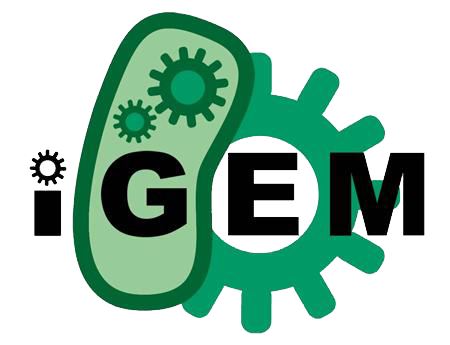Cyclohexane (Talk | contribs) |
Cyclohexane (Talk | contribs) |
||
| Line 29: | Line 29: | ||
<link rel="stylesheet" href="https://2018.igem.org/Team:XMU-China/css/footer?action=raw&ctype=text/css"> | <link rel="stylesheet" href="https://2018.igem.org/Team:XMU-China/css/footer?action=raw&ctype=text/css"> | ||
<link rel="stylesheet" href="https://2018.igem.org/Team:XMU-China/css/nav?action=raw&ctype=text/css"> | <link rel="stylesheet" href="https://2018.igem.org/Team:XMU-China/css/nav?action=raw&ctype=text/css"> | ||
| − | + | <link rel="stylesheet" href="https://2018.igem.org/Team:XMU-China/css/description?action=raw&ctype=text/css"> | |
| − | + | <link rel="stylesheet" href="https://2018.igem.org/Team:XMU-China/css/font?action=raw&ctype=text/css"> | |
<link rel="stylesheet" href="https://2018.igem.org/Team:XMU-China/css/nav_mobile?action=raw&ctype=text/css"> | <link rel="stylesheet" href="https://2018.igem.org/Team:XMU-China/css/nav_mobile?action=raw&ctype=text/css"> | ||
<link rel="stylesheet" href="https://2018.igem.org/Team:XMU-China/css/material-scrolltop?action=raw&ctype=text/css"> | <link rel="stylesheet" href="https://2018.igem.org/Team:XMU-China/css/material-scrolltop?action=raw&ctype=text/css"> | ||
Revision as of 11:42, 13 October 2018


To construct this system and verify the feasibility of this system, we divided the whole structure of ABCD system to four parts by flexibly utilizing the modular features of Synthetic Biology.
First of all, the aptamer SYL3C[1] and its “complementary strand” must form a structure of double-strand, which was the basis of competition (see more details in our Design). The electrophoretic behavior of ssDNA is evidently different from that of dsDNA due to their different conformations[2]. On this basis, we used electrophoresis to prove that the SYL3C-C3-FITC complex indeed formed (Figure 1, see more details in our Results).

Figure 1. The results of electrophoresis.
II.Particle Standard Curve
Aptamer's binding its target is also significant because this is the propulsion of competition. It is worth mentioning that there are many ways to show these two molecules’ binding and their affinity[3]. This time we used an approach of ultrafiltration (Figure 2) to prove the binding of SYL3C and EpCAM. Those EpCAM which bind the SYL3C-FAM will be intercepted by the special filter, which would cause the decrease in fluorescence intensity of the filtrate after centrifugation (Figure 3, see more details in our Results). The measurement of fluorescence intensity was completed by using a microplate reader (Figure 4).

Figure 2. The ultrafiltration tube produced by Amicon®.

Figure 3. The results of ultrafiltration.
III. Fluorescence standard curve

Figure 4. Microplate reader (Tecan Infinite® M200 Pro).
Then to prove whether competition was feasible or not, the traditional fluorescence approach was used accordingly. The C3 strand was modified by linking a FITC label. The successful outcome of the competition can verify that EpCAM squeezed out the C3 from SYL3C-C3-FITC complex, and the fluorescence intensity of supernatant of “adding EpCAM” would show significant differences to that of “without EpCAM” (Figure 5, see more details in our Results. In addition, we used a fluorescence spectrometer (Figure 6) to carry out the measuring task rather than a microplate reader used before, which meant that diverse measurement methods were involved appropriately and reliably in our experiments.

Figure 5. The results of competition (4-“adding EpCAM”, 3-“without EpCAM”).

Figure 6. Fluorescence spectrometer (Shimadzu® RF-6000).

Figure 7. The results of characterization.
Last but not least, the effectiveness of the amplifier and reporter of ABCD system being proved was also essential (see more details in our Design. A special short ssDNA of 21nt was used to activate the Cpf1 protein which had been incubated with the corresponding crRNA in advance in order to form the RNP complex. After this, we set controls and made distributions by manipulating DNaseAlertTM Substrate Nuclease Detection System[4] (provided by IDT®) to test if the activity of trans-cleavage[5], [6] of Cpf1 was activated. Such a method had already been reported before to check DNase activity of Cpf1[6]. The microplate reader was used again to measure the fluorescence intensity due to continuous measurement over time. A significant trend of increase of fluorescence intensity showed a satisfying result that the activity was activated evidently (Figure 7, see more details in our Results).
In order to verify the effectiveness of our Kai system, we verified the Escherichia coli that was transferred into the Kai loop under the fluorescence microscope after synchronization. Since the Kai system is designed for periodic output of signals in Escherichia coli, we will evaluate the changes of fluorescent signals over time.
Bioluminescence Assay and Data Analysis
(1) The strain we studied was cultivated in LB solid medium, containing the specific antibiotic. And the strain was incubated in 37℃ for 12 hours.
(2) The monoclonal bacterial colonies were picked and inoculated in specially treated M9 medium. Bacteria in M9 were incubated for 1 hour for synchronization.
(3) The germ solution was diluted to OD600=0.1(200ml in M9 medium), and 0.5% succinic acid and 1mM leucine were added to delay the growing and asynchronization.
(4) The plates containing cells in different parallel groups were placed into … and the intensity of bioluminescence were recorded for curve drawing and the videos were kept for further analysis.
[1] Yanling Song, Zhi Zhu, Yuan An, Weiting Zhang, Huimin Zhang, Dan Liu, Chundong Yu, Wei Duan, Chaoyong James Yang, Selection of DNA Aptamers against Epithelial Cell Adhesion Molecule for Cancer Cell Imaging and Circulating Tumor Cell Capture, Anal Chem, 2013, 85, 4141-4149.
[2] Janet Iwasa, Wallace Marshall, Karp’s Cell and Molecular Biology: Concepts and Experiments(8th ed.), Wiley: Hoboken, NJ, 2016, 719.
[3] Ge Yang, Qiang Wei, Xinying Zhao, Feng Qu, Research advances of aptamers selection for protein targets, Chinese Journal of Chromatography, 2016, 34, 370-381.

